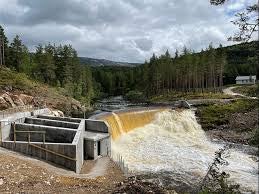Hydro Tasmania has installed an eel bypass in Trevallyn Dam in Launceston to protect the short-finned eel (Anguilla australis), the first time any dam in Australia has been fitted with an eel bypass for downstream migration.
The announcement of the bypass comes on World Nature Conservation Day, which hopes to raise awareness of best practices for the protection of natural environments and habitat.
“Hydro Tasmania is Australia’s largest water manager and Tasmanians expect us to look after the waterways under our care, and that includes protecting the species we’re sharing these areas with,” Hydro Tasmania CEO Steve Davy said. “Though not endangered in Australia, similar species of eels are listed as threatened in the Northern Hemisphere, so the responsibility is on water managers like Hydro Tasmania to take action.”
Hydro Tasmania aquatic scientist David Ikedife said the South Esk Dam catchment is vitally important for this species, although this was not yet fully understood.
“As juveniles, they migrate upstream into the dam each spring and some individuals can live for many decades in the area,” Ikedife said. “As adults they will travel downstream to breed, out the Tamar Estuary, along Australia’s east coast, dispersed as far as New Zealand, to spawn in the Coral Sea off the coast of Queensland, where the juveniles will start the journey all over again.”
Hydro Tasmania first installed an eel ladder at Trevallyn Dam in the ‘90s, for the juvenile eels to climb back up the dam, but until now their annual downstream migration has relied either on the dam spilling, or the eels trying to pass through the Trevallyn Power Station intake, Ikedife explained.
“This is the first time any dam in Australia has been fitted with an eel bypass for downstream migration, so a lot of research and development has gone in to this, and population numbers will be carefully monitored to see what effect it has.
“During the eel’s downstream migration from December to April each year, visitors to Trevallyn Dam will see the small cascade of water from the eel bypass in operation and will know Hydro Tasmania is helping this native species on its long journey.”






